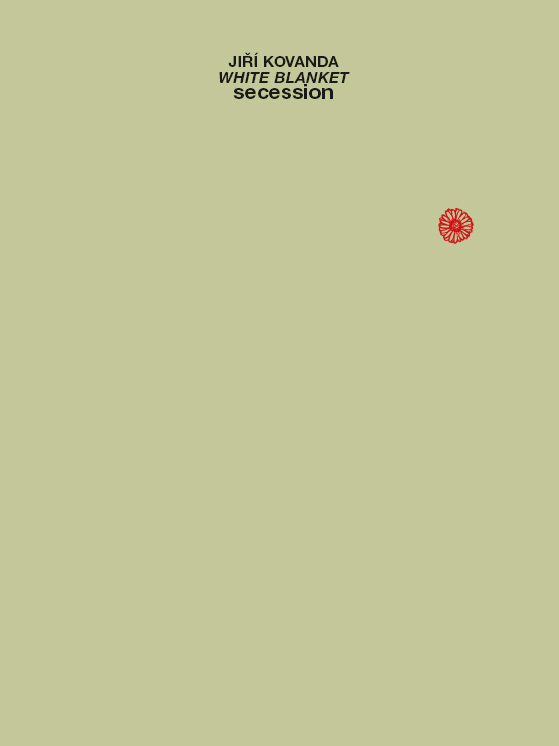White Blanket
availability unknown, if interested please write an email
Within the Secession, Jiří Kovanda places, with an almost offhand gesture, various objects—though they are taken from domestic life, their subtexts readily suggest erotic connotations—: white blankets, a blue orchid, a red lamp, a yellow broom … In their presentation, Kovanda applies the poetic-Surrealist principle of transforming objects and situations by means of small alterations that displace them into more open significative contexts.
Mit dem tschechischen Künstler Jiří Kovanda präsentiert die Secession erneut einen Künstler der mittleren bis älteren Generation, der aktuell als wichtige Referenzfigur bei jüngeren KünstlerInnen gilt. Für seine erste institutionelle Einzelausstellung in Wien hat er eine neue, auf den Hauptraum der Secession zugeschnittene Installation konzipiert, mit der er seine subtile Praxis der minimalen, beiläufigen Gesten fortschreibt.
Im Zentrum der internationalen Wahrnehmung Jiří Kovandas stehen vielfach seine frühen Interventionen im öffentlichen Raum. In der zweiten Hälfte der 1970er-Jahre realisierte er in Prag eine Reihe von Performances, die an der Grenze zur Unsichtbarkeit das sozial Gewöhnliche untersuchten und die alltäglichen Handlungsspielräume des Individuums ausloteten. So schaute er beispielsweise den Leuten auf der Rolltreppe hinter sich gebannt in die Augen oder stand mit ausgebreiteten Armen auf dem zentralen Wenzelsplatz. In anderen Arbeiten inszenierte er einfachste Materialien wie Laubhaufen oder kleine Türme aus Zuckerwürfeln an ausgewählten Orten innerhalb der Stadt. Nachdem er in den 1980er- und 1990er-Jahren vor allem Collagen und Assemblagen geschaffen hat, entstehen in den letzten Jahren wieder verstärkt ephemere und situationsbezogene Aktionen und Installationen. In Kissing Through Glass (2007) etwa waren die MuseumsbesucherInnen der Tate Modern in London aufgefordert, mit dem Künstler auf diese Weise in Kontakt zu treten; auf der Eröffnung der Kunstmesse FIAC (2007) verteilte er unbemerkt Süßigkeiten in die Handtaschen der BesucherInnen und anlässlich einer Ausstellung in Santiago de Compostela viertelte er einen antiken runden Tisch und passte ihn in die Ecken des Raumes ein (2008).
In Kovandas raumspezifischer Installation für die Secession ist das zentrale Element eine bis auf Augenhöhe hochgezogene Wand, die den Ausstellungsraum in zwei Hälften teilt und in ihrem Grundriss eine Reihe von Aus- und Einbuchtungen aufzeigt. Sie etabliert auf verschiedenen Ebenen ein Spannungsverhältnis: zwischen der weiten Leere des Raumes und seiner Verengung zur Nische, zwischen skulpturaler Autonomie und architektonischer Funktion, zwischen dem exponierten Davor und dem verborgenen Dahinter. Durch die Form der Wand, insbesondere durch ihre gerade noch zu überschauende Höhe, bindet Kovanda die BetrachterInnen in das für sein Werk charakteristische Spiel des (Sich-)Versteckens und Suchens aktiv ein. Innerhalb dieser Architektur positioniert er nahezu beiläufig verschiedene Objekte, die dem alltäglichen häuslichen Leben entstammen, im Subtext aber auch durchaus erotische Konnotationen aufweisen: weiße Bettdecken, eine blaue Orchidee, eine rote Lampe, einen gelben Besen … In seiner Präsentation folgt Kovanda dabei dem poetisch-surrealistischen Prinzip, die Objekte und Situationen durch kleine Abänderungen zu transformieren und in offenere Bedeutungszusammenhänge zu verschieben.
In the Czech artist Jiří Kovanda, the Secession once again presents an artist in an advanced stage of his career who is currently considered an important point of reference for younger artists. For his first solo show at an institution in Vienna, he has conceived a new installation specifically designed for the main hall at the Secession. In this new work, he continues his subtle praxis of minimal and offhand gestures.
The public perception of Jiří Kovanda’s work often focuses on his early interventions in the public space. During the second half of the 1970s, he implemented a series of performances in Prague that examined the socially familiar on the edge of invisibility, probing the leeway everyday life leaves the individual. For instance, he would stare, as though spellbound, in the eyes of people standing behind him on an escalator, or stand, arms spread wide, on the city’s central Wenceslas Square. In other works, he staged perfectly humble materials, such as piles of leaves or small towers made of sugar cubes, at selected sites in the city. After focusing on creating collages and assemblages during the1980s and 1990s, he has in recent years increasingly returned to ephemeral and situation-specific actions and installations. In Kissing Through Glass (2007), for instance, visitors to the Tate Modern, London, were invited to interact with the artist in the way indicated by the title; during the opening of the art fair Fiac (2007), he smuggled candies into visitors’ handbags; and on the occasion of an exhibition in Santiago de Compostela, he cut an antique round table into four parts, which he fitted into the corners of the room (2008).
The central element in Kovanda’s site-specific installation for the main hall at the Secession is a wall rising to the viewer’s eye level that divides the exhibition space into two halves; its layout includes a series of bays and salients. It creates tensions on various levels: between the empty space it leaves wide open and the niches it circumscribes, between sculptural autonomy and architectural function, between the exposed space in front and the concealed space behind. With the shape of the wall, and in particular with its height designed such that visitors can just barely look over it, Kovanda actively involves them in the play of hide and seek that is characteristic of his oeuvre. Within this architecture, he places, with an almost offhand gesture, various objects—though they are taken from domestic life, their subtexts readily suggest erotic connotations—: white blankets, a blue orchid, a red lamp, a yellow broom … In their presentation, Kovanda applies the poetic-Surrealist principle of transforming objects and situations by means of small alterations that displace them into more open significative contexts.






